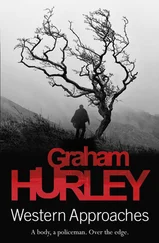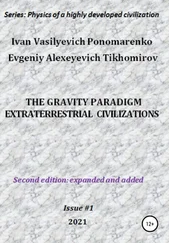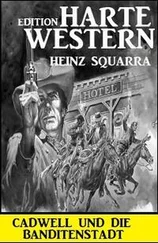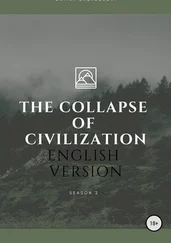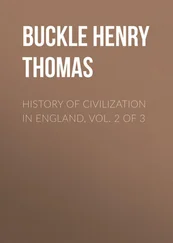(The Anglo‐Saxon Chronicle 2019)
“God, save us from the wrath of the Norsemen” was a prayer offered up from the churches and monasteries during the Viking Age.
The Viking migration followed three main routes. The Norse followed a northern or eastern route to Scotland, Ireland, Iceland, Greenland, and eventually the island of Newfoundland off the eastern coast of Canada. They colonized the Faeroes, Shetland, Orkney, and Hebrides Islands, Ireland, and the Isle of Man by 800. They settled Iceland in 874 and Greenland in 986. The Norse established two settlements in Greenland, one on the western coast (Western Settlement) and one on the southern tip (Eastern Settlement). Together, they accommodated several hundred farms and more than 3000 settlers at their peak. The Western Settlement was abandoned around 1400, and the Eastern Settlement within the next 50 years.
The Norse Vikings established a presence along the Canadian coast, an area they called Vinland. The exact location of Vinland has been disputed. Popular myth has placed it as far inland as Minnesota. Excavations undertaken at L'Anse aux Meadows on the northern tip of Newfoundland beginning in 1960 uncovered the remains of a Norse settlement. The style and structure of the buildings found at the site are identical to those found in Greenland and Iceland from the same period. Recent excavations during 2016 at Point Rosee on the southern tip of Newfoundland reveal a second Norse settlement on the island. No archeological evidence has been found of Norse settlements or trading posts on the North American mainland, but New Brunswick is a likely location for future discoveries.
The Vikings out of Sweden, called Rus or Varangians, took an eastern route down the rivers of Eastern Europe, especially the Don and Dnieper. They engaged in a profitable trade between the Baltic and Black Seas. Byzantine merchants and Arab traders along the Volga River and on the shores of the Sea of Azov engaged in trade with the Vikings. The Vikings traded amber, furs, honey, slaves, wax, and weapons for silks, silver, and other luxuries. There was a major trading center on the future site of Novgorod as early as the middle of the ninth century. According to the Russian Chronicles, Prince Oleg of Novgorod (r. 879–912) founded the state of Kievan Rus' in 907 with Kiev as its capital. Prince Oleg negotiated a trade treaty with the Byzantine Empire in 911.
The Vikings (mostly Danes) raided down the rivers of continental Europe as the Carolingian Empire fragmented. Their longboats were long, narrow, and had a shallow draft that made them ideally suited for swift raids on monasteries and settlements along the rivers. A longboat could carry 40–60 warriors. The raiders could appear suddenly and be gone before word of their arrival ever reached the one who was expected to raise an army for defense. The Annals of St. Bertin, records the Danish raid on Dorestad, a trading center, in 834:
Meanwhile a fleet of Danes came to Frisia and laid waste a part of it. From there, they came by way of Utrecht to the emporium called Dorestad and destroyed everything. They slaughtered some people, took others away captive, and burned the surrounding region.
(Nelson 1991, p. 30).
By the middle of the ninth century, the Viking raiders came in fleets of as many as 350 ships and several thousand warriors. They began to winter over in the lower Seine Valley in 851. From there, they were able to harry the largely defenseless former Carolingian empire.
In 911, Charles the Simple (879–929) signed the Treaty of Saint‐Clair‐sur‐Epte with the Viking leader, Rollo (b. c. 846), in which Charles ceded to Rollo the territory later known as Normandy, “land of the Northmen.” Rollo became a Christian and agreed to serve Charles and protect the Seine estuaries from further Viking incursions. It was Rollo's great‐great‐great‐grandson, William, Duke of Normandy, who invaded and conquered England in 1066. The Battle of Stamford Bridge (1066), where Harold Godwinson defeated King Harald III Hardrada of Norway, and the Battle of Hastings, where Duke William defeated Harold Godwinson, mark the end of the Viking Age.
After the collapse of Charlemagne's empire, there was no longer a central government and no great warrior like Charlemagne to defend Christendom from the new invaders. As one chronicler put it, “Once we had a king, now we have kinglets” (Dowley 2018, p. 140). Or as another said in 909, “every man does what seems good in his own eyes, despising laws human and divine and the commands of the Church. The strong oppress the weak; the world is full of violence against the poor and of the plunder of ecclesiastical goods” (Bokenkotter 2005, p. 112). In the midst of the chaos, a system known generally as feudalism evolved to provide for law and order and economic livelihood at the grassroots level.
In attempting to describe feudalism, one is forced to describe it in theory, since it evolved over several centuries and differed from place to place and from time to time. It is doubtful that feudalism in practice ever fully reflected feudalism in theory. The highly centralized version introduced in England following the Norman Conquest in 1066 is probably the closest practice ever came to approximating theory.
The political, economic, and social order of medieval Europe is referred to by the generic term “feudalism.” A distinction is made between the governmental side of feudalism and the economic side of feudalism. The governmental side is referred to as the feudal system, and the economic side is referred to as the manorial system.
Medieval society divided people into two classes – nobles and commoners. The emergence during the late Middle Ages of a third class, the middle class (bourgeoisie), which could not be fitted into feudalism, was a leading cause of its slow decline. The feudal system involved only the members of the nobility, and had to do with the relationship between lord and vassal. The manorial system involved both the nobility and the commoner, and had to do with the relationship between the lord of the manor and the commoners (serfs, peasants, villeins, yeomen) who lived on the manor and worked the land.
The primary function of the feudal system was to exchange land for military service. Land was the one valuable commodity in the agricultural world of medieval Europe. In theory, the land belonged to the king, or in the case of the Holy Roman Empire, the emperor. Without money to hire soldiers, the king used the one thing he possessed, that is, the land. The king would give use, not ownership, of a piece of land to a nobleman in exchange for military service. Depending on the size of the land that the nobleman received, he was required to provide a certain number of armed mounted knights to serve in the king's army for a certain number of days each year.
The one granting the land became the lord, and the one receiving the land became the lord's vassal. The grant of land, itself, was called a fief. A fief contained one or more manors, that is, self‐sufficient agricultural units roughly similar to a plantation. Serfs or peasants came with the land. Their role was to work the land and perform other various duties for the one who possessed the land, and who was their lord, the lord of the manor. The lord of the manor used the income from the land to provide the necessary armament, weapons, and warhorse for himself and, if necessary, the other knights he agreed to furnish.
The exchange of land for services took the form of an investiture ceremony. The vassal knelt before his lord, placed his hands between the lord's hands and swore to be the lord's man and perform the duties agreed to, some of which were traditional and others were specific. The lord would then hand a clump of dirt, or other object symbolizing the land grant, to the vassal. Thus, the vassal was invested with his fief.
Читать дальше


